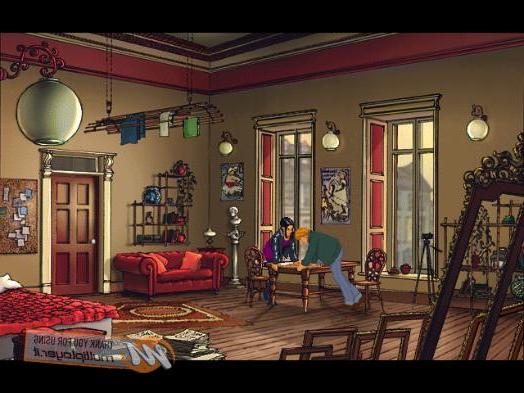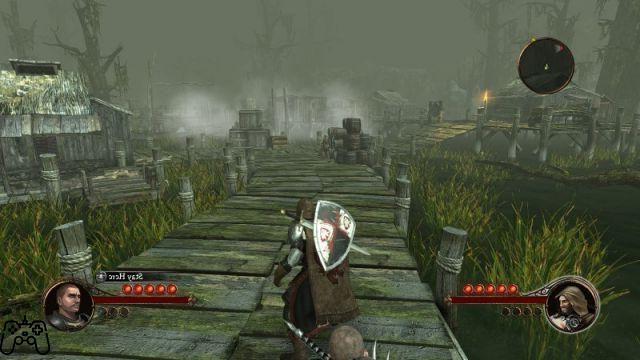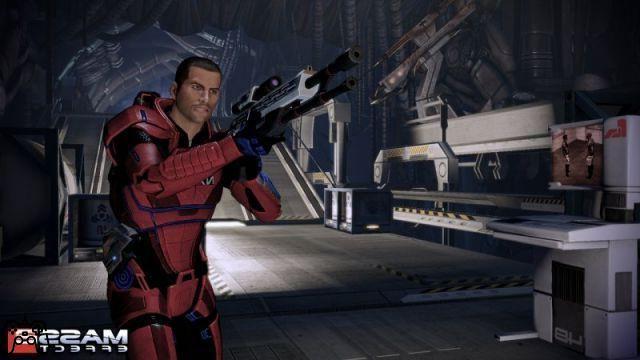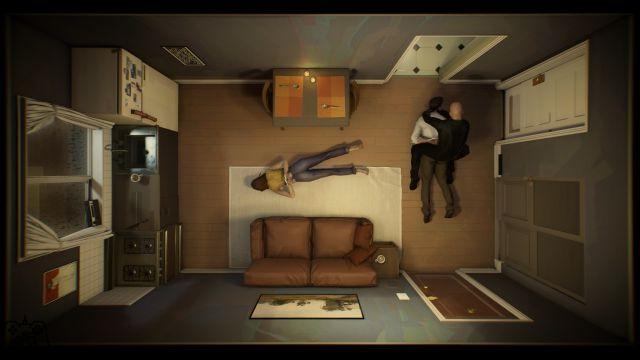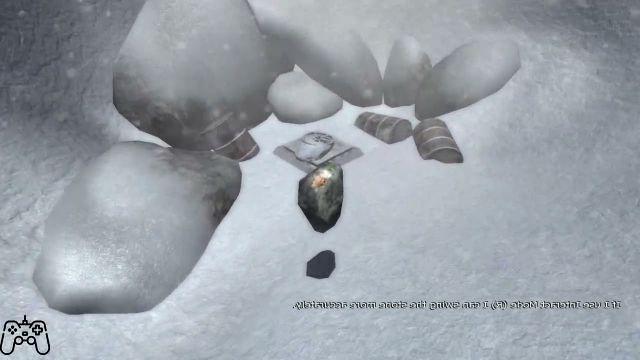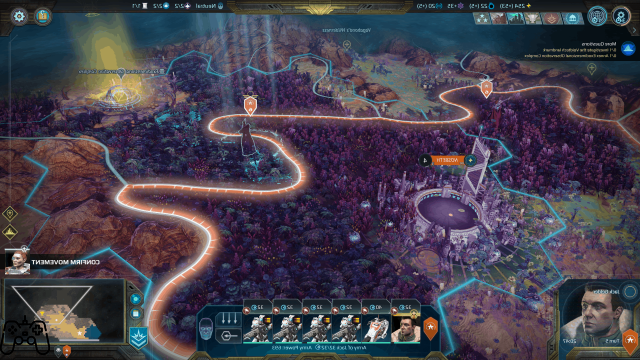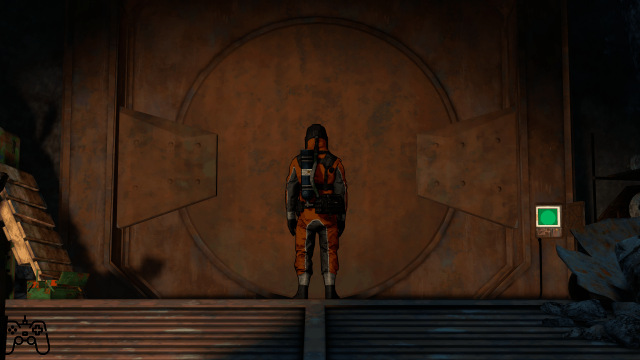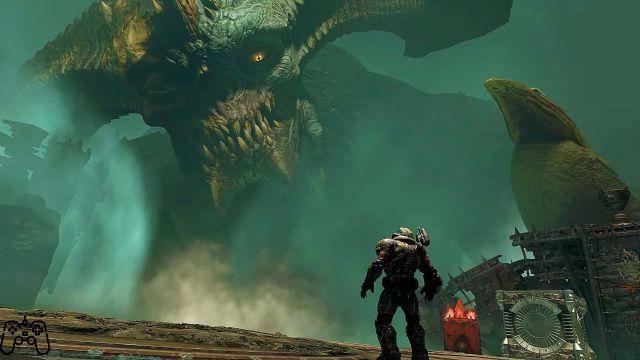Imagine Earth is a strategy game truly exceptional. I confess that I do not know where to start writing about it except from the fact that I have thought for a long time about the adjective to give to this first sentence. I looked at the blank of the white sheet for a few minutes and in the meantime I thought about which words I would use for a random Civilization VI, because at the beginning it seemed to me that I had to weigh the judgment, to avoid exaggerating, taking into account that the productive values of Imagine Earth are tiny compared to those of the giants of the genre…. but then I said to myself "but also sticazzi", so yes: Imagine Earth is an exceptional strategy, defined by the developers as a real-time planetary simulation based on the management of a space colony to be made flourishing and profitable by trading in resources or alliances.
It's actually a lot more complex than that, but we'll talk about it after the trailer.
It was 2008: Martin Wahnschaffe, Jens Isensee and Florian Mätschke, three very young German students, presented themselves at the Louvre Museum in Paris to participate as Microsoft's 2008 Imagine Cup finalists in the Game Development category. The next year win Serious Game Awards of Hannover in the selection of the Persuasive Game. In the meantime, one of the three boys - Florian - gave up the project but the two remained continue their climb: in 2010 they are among the European Games Award finalists of Cologne. In 2012 win Intel Level Up and in 2015, after having founded their company, they are among the finalists and winners of another half dozen international competitions.
it is a product finished and cared for in every aspect
The Early Access version of Imagine Earth is released on Steam on May 20, 2014 and the day after tomorrow, Wednesday May 26, 2021, Imagine Earth will come out of beta limbo to enter its 1.0 build more than seven years after the first fundraising campaign on Indiegogo. I had been keeping an eye on it for a while but I didn't want to write a preview: I wanted the game over because after all this time the guys at Serious Brothers deserved it ... and in fact I already tell you: buy Imagine Earth (like now). Over the years, without stopping, the developers have revised the interface, the game engine and the mechanics. What at first seemed like a low-budget indie game has been transformed, like a caterpillar that becomes a butterfly, into a product that is finished and cared for in every aspect. Here, it is good to reiterate it: you never get the impression of having an underground title in your hands.
 802f8a2636c8cf0-0.jpg">
802f8a2636c8cf0-0.jpg">Let's start from the fact that Imagine Earth presents the localization in Italian? No, come on: by now you are used to not finding it so I don't want to question your clichés made in Paradox, for which if you want to play in our language you have to rely on unofficial amateur translations. Also in this case the translation is amateur but the developers, who over the years have forged a rather solid bond with the community (at the moment there are about 43 thousand users), have been careful to include all the translators in the credits of the game. But I said that it made no sense to start from this topic so let's talk about something else: the gameplay is a mix between planetary city building and 4X in real time, complete with a tree of technologies to be researched, perk and climate changes caused by the reckless action of clumsy colonizers (ie me).
it's a mix between city building and 4X in real time
There are three game modes: the classic campaign, in which we will have to achieve pre-established objectives such as a certain number of inhabitants or exported resources; the competitive mode in Civilization VI style, in which we will have to get the better of other players within the same world; the "infinite game", that is a customizable biosphere on which to be able to expand as we please without the need to perform specific tasks. If the scenarios created with the integrated editor and those generated by other users also fall into this last category, who have selected environmental conditions, flora and unique resources to create different limits and opportunities, in campaign mode you play as a human colonizer of an interplanetary corporation which will have the mandate to occupy uninhabited planets (not always) and proliferate until the achievement of the required achievements to open the doors of the next world. There is also a kind of plot that acts as a leitmotif and places the emphasis on great protagonist of all the gameplay, that is, equilibrium.
 802f8a2636c8cf0-1.jpg">
802f8a2636c8cf0-1.jpg">
 802f8a2636c8cf0-2.jpg">
802f8a2636c8cf0-2.jpg">
It all starts with choosing the triangular tile on which to install the first city center. Each box has its own characteristics and vary from the degree of fertility to the productive multipliers, the pollution rate, the relative temperature and the type of soil that identifies which buildings can be installed. With the arrival of the first settlers, it will be necessary to provide them with energy, food and electricity. Each structure can be built only if in possession of the respective building permit and only if already sought. It goes without saying that we will start with coal-fired power plants or intensive farms to get toorganic farming and clean energy. Licenses can also be purchased from the many travelers who land on the planet, whether they are traders or scientists looking for information on the alien ruins present throughout the (first) galaxy.
building tiles are a scarce resource and the watchword is "optimize"
In the midst of this evolution, again through the technology tree, we will be able to unlock upgrades and variants for each structure. We will therefore have the possibility of building urban nuclei with public transport or vertical woods, but also laboratories that they recycle waste independently or they produce energy when, in their vanilla version, they would do none of this. Considering that there are five families of buildings, each made up of eight different functions and that for each of these three variables can be activated, the fact that you can't be bored I want to take it for granted. It's true: once all the options are discovered, there is no desire to experiment with alternative solutions, but enough hours have passed to want a new IP. I almost forgot to add that each structure has negative or positive influences on the adjacent ones. It is a very refined growth system, perfectly integrated in the omnipresent territorial competition implicit in the low number of building tiles. The basic mechanics, therefore, is to proceed by optimization, that is to make the whole urbanization efficient, whether it is primary, secondary or tertiary (and do it quickly). In the process of growing the colony there are many adversities: from the other corporations that want to colonize their portion of the world, perhaps by first recovering the crystals necessary to open the portal to another galaxy (I didn't tell you niete), to the space pirates who ask for ransoms in goods and raw materials, penalty the beginning of a firefight (and if you haven't researched and built the watchtowers they are bitter cocks, word of a lupetto).
we will be able to unlock upgrades and variants for each structure
The real enemy of the colonizer of the future, however, is pollution. This is inevitable, especially at the beginning: every structure produces waste and gases that are released into the atmosphere, leading to rising temperatures and desertification of the soil. Arid soil produces less food, the ice of the poles begins to melt, people begin to get sick and epidemics spread in all inhabited districts. I must admit that the first time I witnessed this process I was amazed. In the sense: I knew that I was pulling the rope with coal plants and factories, but I never imagined seeing my food production collapse with a lot of famine, sea level rise and a contagion born in the suburbs and then spread throughout the planet (also among the inhabitants of the opposing corporation, with which I had to forge an alliance to find a cure and save what can be saved). Imagine Earth prompts you to think about the consequences of a development that is not integrated with the environment and, specifically, to take advantage of technological research to redevelop buildings that are too energy-intensive or polluting. As I said, the great protagonist of Imagine Earth is the balance between the parts… and heck if they managed to make it fun!
 802f8a2636c8cf0-3.jpg">
802f8a2636c8cf0-3.jpg">
 802f8a2636c8cf0-4.jpg">
802f8a2636c8cf0-4.jpg">
Each biosphere is full of different resources that can be extracted and sold, or exploited to create particular objects such as fertilizer bombs. Furthermore, all buildings can level up and increase their production values or capacity. Warehouses, for example, when they level up they get an additional drone with which to extract more resources from the ground and repair or sanitize the building (God bless the drones). If the industrial structures have an autonomous growth, the principle of proximity applies to residential ones, ie that only a cohesive urban conglomerate activates the upgrades for the single occupied tiles. Again this is more difficult said than done, because the developers have studied a 'very intuitive interface which allows you to immediately understand which structures or groups can level at that given moment.
The real enemy of the colonizer of the future, however, is pollutionFrom a technical point of view Imagine Earth spins away which is a marvel, without slowing down even on mid-range machines like mine. Artistically (now I can write it with the consent of the legislator) each planet is a small wonder, while the construction of the residential districts and the choice of colors for the industrial structures could be studied better. In my opinion they should have tried harder in order to make the difference between the architectures more readable, which in themselves are not too bad but get lost a little too much as soon as the population density begins to increase.
USEFUL INFOI played Imagine Earth thanks to a key provided by the developers to power my Ryzen 5 1600, equipped with GeForce GTX 1660 Ti and 16GB of RAM, with the fuel of love for the colonizers of earthly paradises in unknown galaxies.
Duration- The main campaign, not counting the bonus planets or the willingness to complete all the objectives, travels about fifteen hours (but I have put in a lot more but I'm starting to get old for this kind of "thing").
- Imagine Earth is a real-time strategy game on planetary maps divided into triangular tiles. It is an original mix of city building, 4X and management with non-random disastrous events, aliens and space pirates.
- Game Name: Imagine Earth
- Release date: May 25, 2021
- Platforms: PC
- Dubbing language: English
- Texts language: Italian
 802f8a2636c8cf0-5.jpg">
802f8a2636c8cf0-5.jpg">
Oh my God ... I could go on for two hours continuing to mention the many details of the game. I told you that you can also play with alien races? And that the maps produced by the users of the Steam workshop have already been implemented with unique planets and always new challenges? What about that time when I shrugged at a warning of danger on one of my farms and half the city caught fire? Or that to remedy the rise in sea level, money can be invested in the research of buoyant buildings, be they residential or productive? And that in the infinite games there is the Planetary Congress in which to decide who, among the colonizers present on the system, can pollute and how much? Didn't I tell you?
 802f8a2636c8cf0-6.jpg">
802f8a2636c8cf0-6.jpg">Come on: I also have room for a personal comment on the vote. I'm from the team "There is no point in giving 100 because 100 is a vertex to strive for without ever reaching it ". It is also true that I am also part of the team "I rate it based on how much I liked it without giving me too many mental blowjobs about what this, that or Metacritic gave him ". In this light, even if Imagine Earth is not a perfect game, its mechanics are for a good thirty hours (then it starts to repeat itself and that sense of wonder tends to fade). As I wrote, I don't like the design of the structures and I don't like the “still life” bouquet chosen for almost all the buildings. The fact is that, beyond these aesthetic elements, I I don't find any other flaws in the work of the Seriuos Brothers guys. I could understand if a very faithful to Sid Meier if he came up with an invective on the limits of the tree of technologies or on the presence of a few races or on the longevity incomparable to titles of the caliber of Civilization VI, but let's be clear: who (apart from our Claudio Fabbri) really has the time and feel like spending 100 hours on IP like this? "Any hardcore gamer", you will answer me… and you would be right if you could really answer me while I am writing it (but it is a pity that you are not here and you cannot argue). But a user of that type is already moving in a saturated market (think only of Old World and Humankind) so he would not find bread for his teeth in Imagine Earth. For everyone else, then, isn't it smarter to get distracted just for a month and dedicate it to something that can satisfy them without asking them for a year of their life as a player in exchange? I think so, then long live Imagine Earth!
The Imagine Earth review helps support scientific research on Rett syndrome. Find the details of the initiative at this link.
Review by Roberto TurriniGraphics
If it weren't for the design of some buildings and the "still life" chromatic choice for industrial and productive ones, Imagine Earth would be a marvel to look at, no ifs and buts, with its lush and vibrant planets. Here, maybe a little lifeless but ...
80
SOUNDTRACK AND DOUBLE ROOM
Excellent dubbing in English; the soundtrack in the background is a little subdued, but it is a classic of this genre to have little memorable music.
75
GAMEPLAY
I've already written in the body of the text the reason for so much love for Imagine Earth gameplay (so go and read it all). To summarize, I could summarize by saying that the playful structure of the game is based on achieving a balance between the need to expand one's colony and the limits imposed by the single planet. Furthermore, the variety with which to occupy the building spaces is guaranteed by an intelligent system of optimization and growth of each single structure in order to prevent the devastating effects of global warming and desertification.




